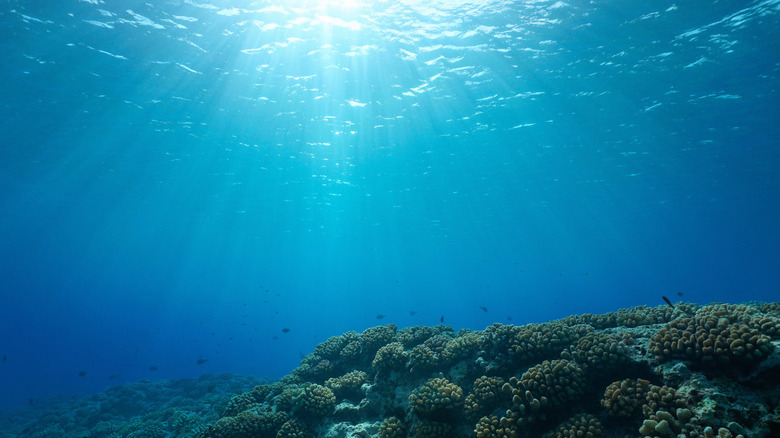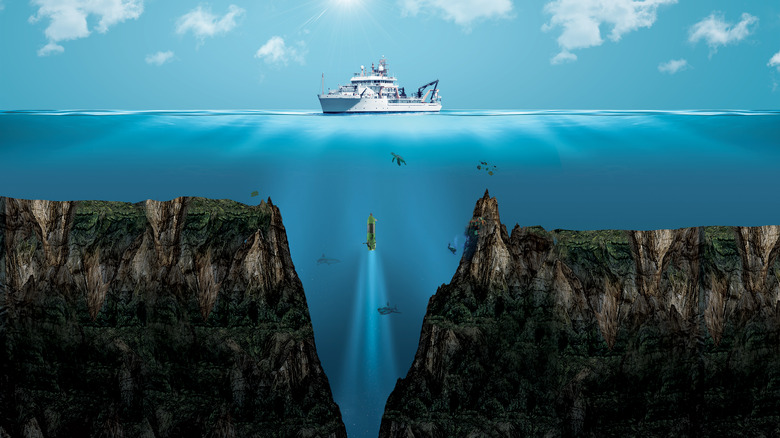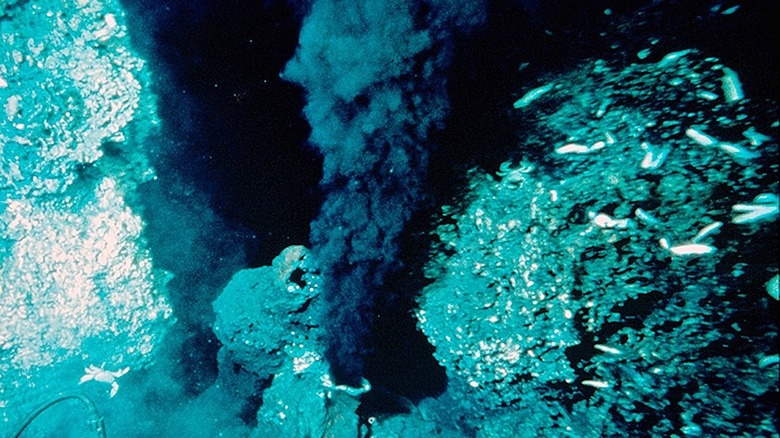How Hot Is The Water At The Bottom Of The Ocean?
The higher and the deeper you go on Earth, the more extreme the temperatures. This is true both when climbing mountains or diving into the deepest parts of the ocean. A good example is Denali (or Mount McKinley), which is considered "the world's coldest mountain." Technically taller than Mount Everest — if you measure from its base rather than just counting above sea level — McKinley also has much harsher weather, per a story on Robinson Sewell Partners. The summits of the world's tallest mountains are also some of the coldest places on Earth. At the top of Denali mountain, you can expect temperatures of up to minus 75 degrees Fahrenheit. And when you account for wind chill, that could feel like minus 118 degrees Fahrenheit (via Live Science).
On the other end of the spectrum, you can find the hottest temperatures by drilling towards the center of the Earth. According to reports published in Smithsonian Magazine, the Earth's core is about 10,800 degrees Fahrenheit, or about as hot as the sun. The center of our planet has been this hot since ... well, forever. And the heat built up during the planet's creation is still there, fueled mainly by the iron-rich and radioactive elements found at the core of the planet.
The ocean's surface can be warm or cold, depending on where you are
The temperature of our oceans is controlled by solar radiation. Oceans near the equator receive more sunlight and thus more radiation, which results in warmer water. According to the National Oceanic and Atmospheric Administration, this means that the average surface water temperature in the tropics is around 86 degrees Fahrenheit. In contrast, the poles receive much less sunlight, so the water doesn't heat up the same way.
While freshwater freezes at 32 degrees Fahrenheit, water temperature needs to go down to 28.4 degrees Fahrenheit for seawater to freeze. At the poles, any water that has not frozen into ice is likely very close in temperature — around or just under 30 degrees Fahrenheit (via NOAA).
The deepest point in the ocean — and actually on Earth — is the Mariana Trench, which reaches about 36,000 feet. The trench is deeper than Everest is taller, which means if you could place Mount Everest inside the Mariana Trench, its peak would not show up through the top of the ocean. The bottom of the Mariana Trench is so very deep that sunlight doesn't reach it. And total darkness means there's nothing to warm up the water down there, so it gets cold — the average temperature at the bottom is 34–39 degrees Fahrenheit. Not exactly freezing and slightly warmer than the ocean water at the poles, but not by much (per Orbit Inside).
The deep ocean is very cold ... except where it isn't
If you don't freeze while in the deep ocean, you might be unlucky enough to run into one of the many hydrothermal vents in the seafloor. According to National Geographic, you can think of these vents as geysers formed along ridges and fissures on the ocean floor. As tectonic plates separate, the cold water slips deep into the ground, where it heats up as it comes in contact with hot magma and picks up minerals. There's so much water pressure at this depth that instead of boiling, the water "explodes up" in the form of a chimney known as a hydrothermal vent. The seawater coming out of these vents can reach temperatures of over 700 degrees Fahrenheit (via NOAA).
These aren't tiny chimneys either — according to National Geographic, they can reach heights of up to 180 feet. Vents either produce white or black smoke; white smokers have lower temperatures and are rich in barium, calcium, and silicon, while black smokers (pictured above) contain mainly sulfur and vent much hotter water.
The higher temperatures and rich mineral content around the vents create an ideal environment for certain animal species to thrive. According to the National History Museum, these include scaly-foot gastropods (a type of snail with an unusually large heart) and yeti crabs (a name that refers to their white color and hairy limbs), as well as a number of mussels and tubeworms.


